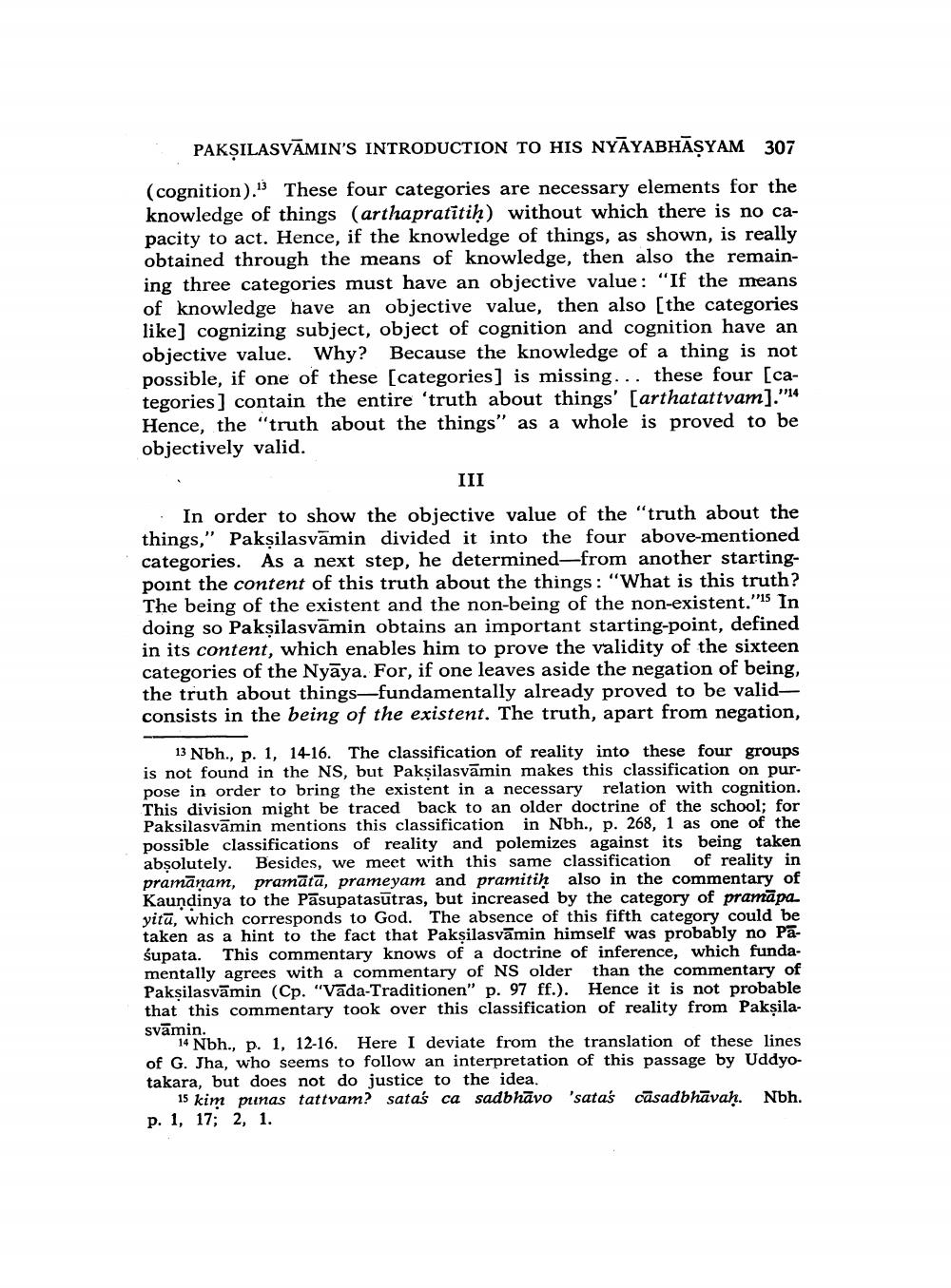________________
PAKŞILASVĀMIN'S INTRODUCTION TO HIS NYĀYABHĀŞYAM
307
(cognition). These four categories are necessary elements for the knowledge of things (arthapratitih) without which there is no capacity to act. Hence, if the knowledge of things, as shown, is really obtained through the means of knowledge, then also the remaining three categories must have an objective value: "If the means of knowledge have an objective value, then also the categories like] cognizing subject, object of cognition and cognition have an objective value. Why? Because the knowledge of a thing is not possible, if one of these [categories] is missing... these four [categories] contain the entire 'truth about things' [arthatattvam]."'14 Hence, the "truth about the things" as a whole is proved to be objectively valid.
III • In order to show the objective value of the "truth about the things," Paksilasvāmin divided it into the four above-mentioned categories. As a next step, he determined from another startingpoint the content of this truth about the things: "What is this truth? The being of the existent and the non-being of the non-existent."'l5 In doing so Pakṣilasvāmin obtains an important starting-point, defined in its content, which enables him to prove the validity of the sixteen categories of the Nyāya. For, if one leaves aside the negation of being, the truth about things—fundamentally already proved to be valid consists in the being of the existent. The truth, apart from negation,
13 Nbh., p. 1, 14-16. The classification of reality into these four groups is not found in the NS, but Paksilasvāmin makes this classification on purpose in order to bring the existent in a necessary relation with cognition. This division might be traced back to an older doctrine of the school; for Paksilasvāmin mentions this classification in Nbh., p. 268, 1 as one of the possible classifications of reality and polemizes against its being taken absolutely. Besides, we meet with this same classification of reality in pramānam, pramātā, prameyam and pramitih also in the commentary of Kaundinya to the Pasupatasūtras, but increased by the category of pramāpa. yitū, which corresponds to God. The absence of this fifth category could be taken as a hint to the fact that Paksilasvāmin himself was probably no Pā. supata. This commentary knows of a doctrine of inference, which fundamentally agrees with a commentary of NS older than the commentary of Paksilasvāmin (Cp. "Vada-Traditionen" p. 97 ff.). Hence it is not probable that this commentary took over this classification of reality from Paksilasvāmin.
14 Nbh., p. 1, 12-16. Here I deviate from the translation of these lines of G. Jha, who seems to follow an interpretation of this passage by Uddyotakara, but does not do justice to the idea.
15 kim punas tattvam? sataś ca sadbhāvo 'satascāsadbhāvah. Nbh. p. 1, 17; 2, 1.




